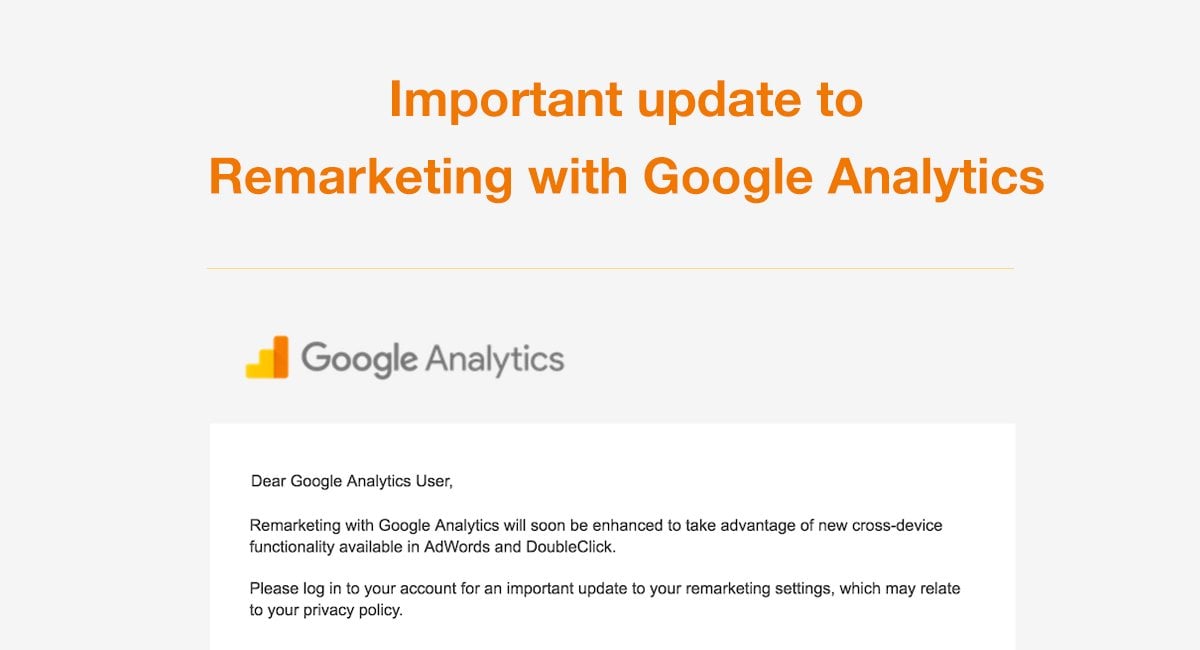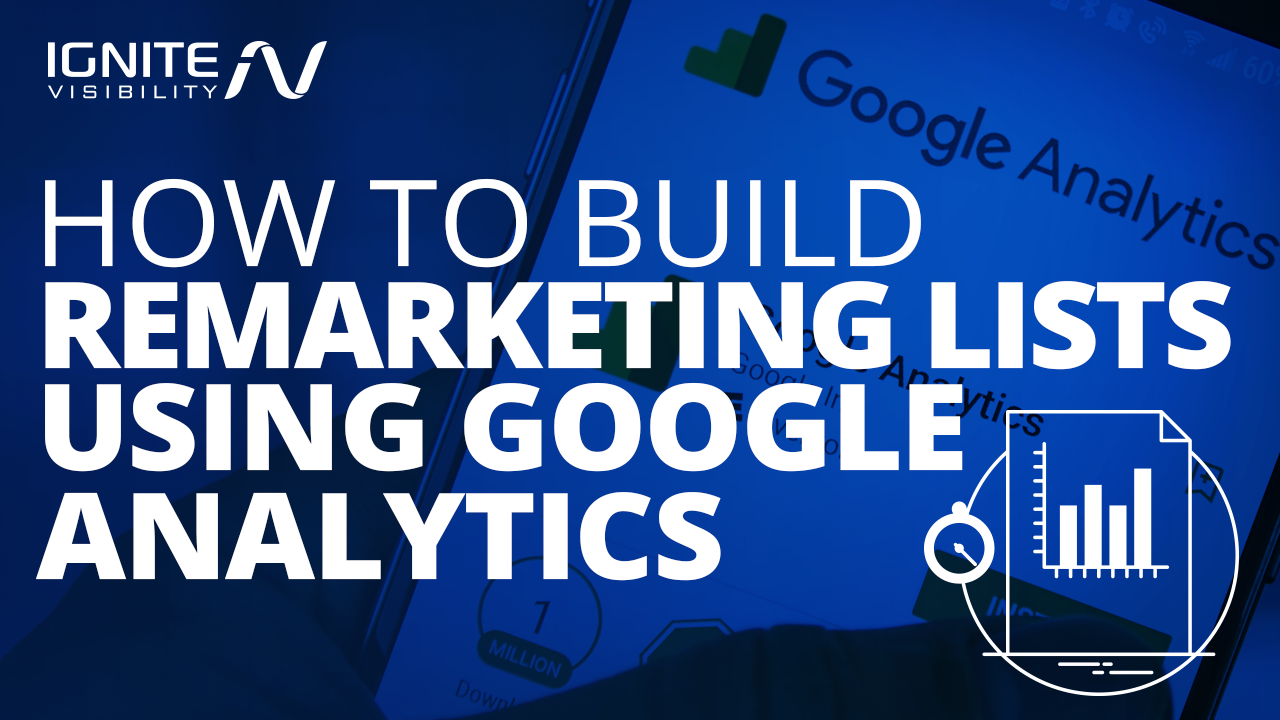Step-by-Step Tutorial: Remarketing In Google Analytics
Step-by-Step Tutorial: Remarketing In Google Analytics
Blog Article
Using Remarketing in Google Analytics: A Comprehensive Guide
Using remarketing in Google Analytics supplies services a tactical edge in reaching out to potential consumers. This overview will certainly drop light on the important steps involved in taking advantage of the full possibility of remarketing in Google Analytics, leading to improved advertising results.
Recognizing Remarketing in Google Analytics
Remarketing in Google Analytics allows services to tactically target customers that have formerly communicated with their site or mobile app. By leveraging information from Google Analytics, services can create customized remarketing checklists based on user habits, such as pages visited, activities taken, or particular objectives attained. This effective tool enables services to re-engage with users that have actually revealed interest in their solutions or items, eventually enhancing the likelihood of conversion.
Comprehending the various types of remarketing strategies is crucial for a successful project - What Is “Remarketing” In Google Analytics?. Google Analytics supplies various alternatives, including typical remarketing, dynamic remarketing, and remarketing lists for search advertisements (RLSA) Each type offers an unique function and can be tailored to meet details marketing objectives
In addition, analyzing the efficiency of remarketing campaigns is crucial for maximizing outcomes. Google Analytics supplies useful understandings right into the effectiveness of various remarketing approaches, permitting organizations to make data-driven choices and improve their targeting strategy. By continually keeping track of and changing remarketing initiatives based on analytics data, companies can optimize ROI and drive success in their advertising initiatives.
Establishing Remarketing Campaigns

After establishing audience lists, the following action is to link Google Analytics with Google Ads. By linking these 2 platforms, companies can seamlessly transfer audience listings from Google Analytics to Google Ads for remarketing purposes. This integration enables even more specific targeting and far better project efficiency.
When the accounts are linked, organizations can produce remarketing campaigns in Google Advertisements using the target market provides previously specified in Google Analytics. These campaigns can be tailored with particular advertisement creatives, messaging, and bidding approaches to effectively re-engage with previous visitors and drive conversions. By following these actions, services can leverage the power of remarketing to improve their advertising initiatives and enhance ROI.
Making Use Of Audience Division Methods

Predefined segments in Google Analytics enable you to promptly evaluate typical target market groups fresh individuals, returning customers, or customers that completed a particular objective on your internet site. Personalized sectors, on the various other hand, enable you to produce special sectors based on particular standards that are necessary to your service purposes. Dynamic remarketing lists automatically change based on individual actions, showing individualized advertisements to customers that have actually connected with your site in particular ways.
Studying Remarketing Efficiency Metrics
Upon assessing the performance of remarketing campaigns in Google Analytics, the analysis of key efficiency metrics gives beneficial insights right into audience interaction and conversion prices. By diving into metrics such as click-through prices (CTR), conversion prices, price per purchase (CPA), and return on ad invest (ROAS), marketing professionals can evaluate the success of their remarketing initiatives. Examining these metrics allows marketing professionals to enhance projects, refine target market targeting, and assign budget plans efficiently to enhance total remarketing efficiency.
Optimizing Remarketing Strategies
When refining remarketing methods in Google Analytics, concentrating on audience division is paramount for accomplishing campaign success. By separating your audience into specific sections based on their behavior, demographics, or interests, you can tailor your ads better per group. This targeted strategy enhances the possibility of involving individuals who have already revealed rate of interest in your services or products, resulting in higher conversion rates.
An additional vital aspect of maximizing remarketing techniques is continually testing and refining your campaigns (What Is “Remarketing” In Google their website Analytics?). A/B testing various ad creatives, messaging, or offers can aid you identify what resonates finest with your target market and drives the most conversions. By assessing the performance of these tests in Google Analytics, you can make data-driven choices to maximize your remarketing efforts even more
Additionally, leveraging vibrant remarketing can substantially boost your project results. This feature allows you to show customized advertisements to users based upon their past interactions with your site, showcasing services or products they have formerly checked out. By supplying customized content to individuals based upon their passions and actions, dynamic remarketing can aid enhance interaction and drive conversions.
Verdict
In conclusion, utilizing remarketing in Google Analytics why not try here is a tactical method to target users that have formerly involved with a website. By creating personalized target market listings and using audience division approaches, organizations can enhance remarketing advocate raised conversion prices. Assessing performance metrics and continuously enhancing methods are essential for taking full advantage of the effectiveness of remarketing initiatives.
Google Analytics offers various alternatives, including standard remarketing, vibrant remarketing, and remarketing checklists for search ads (RLSA)After setting up audience checklists, the following step is to connect Google Analytics with Google Advertisements. By linking these two platforms, businesses can seamlessly transfer target market listings from Google Analytics to Google Advertisements for remarketing purposes.As soon as the accounts are linked, services can create remarketing projects in Google Advertisements making use of the target market notes formerly defined in Google Analytics.When refining remarketing methods in Google Analytics, focusing on target market division is vital for accomplishing project success.
Report this page